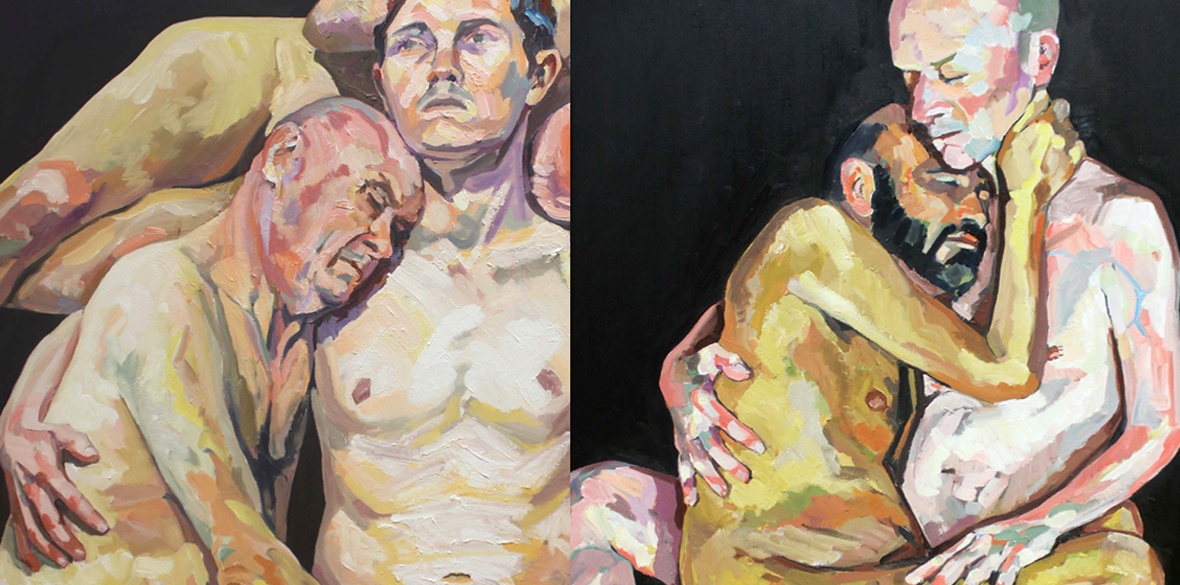This is the last article you can read this month
You can read more article this month
You can read more articles this month
Sorry your limit is up for this month
Reset on:
Please help support the Morning Star by subscribing here
Exhibition Parallel Lives
Angus Reid, Summerhall, Edinburgh
“Painting is a gracious way to accept the world’s hospitality,” says Angus Reid poetically but rather optimistically.
When asked how he employs aesthetics in service of a political cause Reid pointed out that activism and the art keep competing for significance and spurring one another on even though they are so different. He sees it as a partnership. That was the unique experience of assembling this exhibition.
For him it is impossible to separate the subject of same-sex relationships from the need to express solidarity; otherwise it would deviate into opportunist voyeurism. “Not to do so is to give in to oppression,” he said before pointing out unequivocally that “in my view that’s why so-called queer art is often so scrappy and inconsequential, secret note books, erotica, fakes, provocative gesture etc.”
These figures are real, have names, shared history and important values – these are not “fantasy bodies in an imaginary and non-existent sensual utopia.”
For Reid the personal is political, and particularly so when it concerns the oppressed, and such engagement resonates with many authentic voices here. The vulnerable intimacy depicted on canvass is just an element of a far wider narrative.
The invocation of communists Harry Whyte, who confronted Stalin over his homophobia and Mark Ashton who stood by the miners in 1984, validates the continuity of struggle in which today the Polish academic Tomasz Kitlinski faces a political bonfire set for him by a modern day inquisition in his native Poland. It provides a powerful validation of the paintings and drawings – one that complements all else in this assemblage.
These are the Parallel Lives of the title. The exhibition remains a conceptual statement in which its embrace is extended to “all minorities in the present in a human empathetic way, but that doesn’t need to limit itself to that. It can embrace the past and the future as well.”
Reid points out the ageism of artists like Henry Scott Tuke, Duncan Grant or Keith Vaughan who “as older men, painted only fantasy images of younger men.” By contrast his subjects are older men and he summons in support Joseph Beuys’s Invisible Sculpture and Work in the Social Medium as “the frame within which the supposed opposition and mutual exclusiveness of art and activism are reconciled.”
Whyte once stated: “The fact that I am homosexual in no way diminishes my value as a revolutionary.” An obvious truth that still eludes far too many.
Michal Boncza










